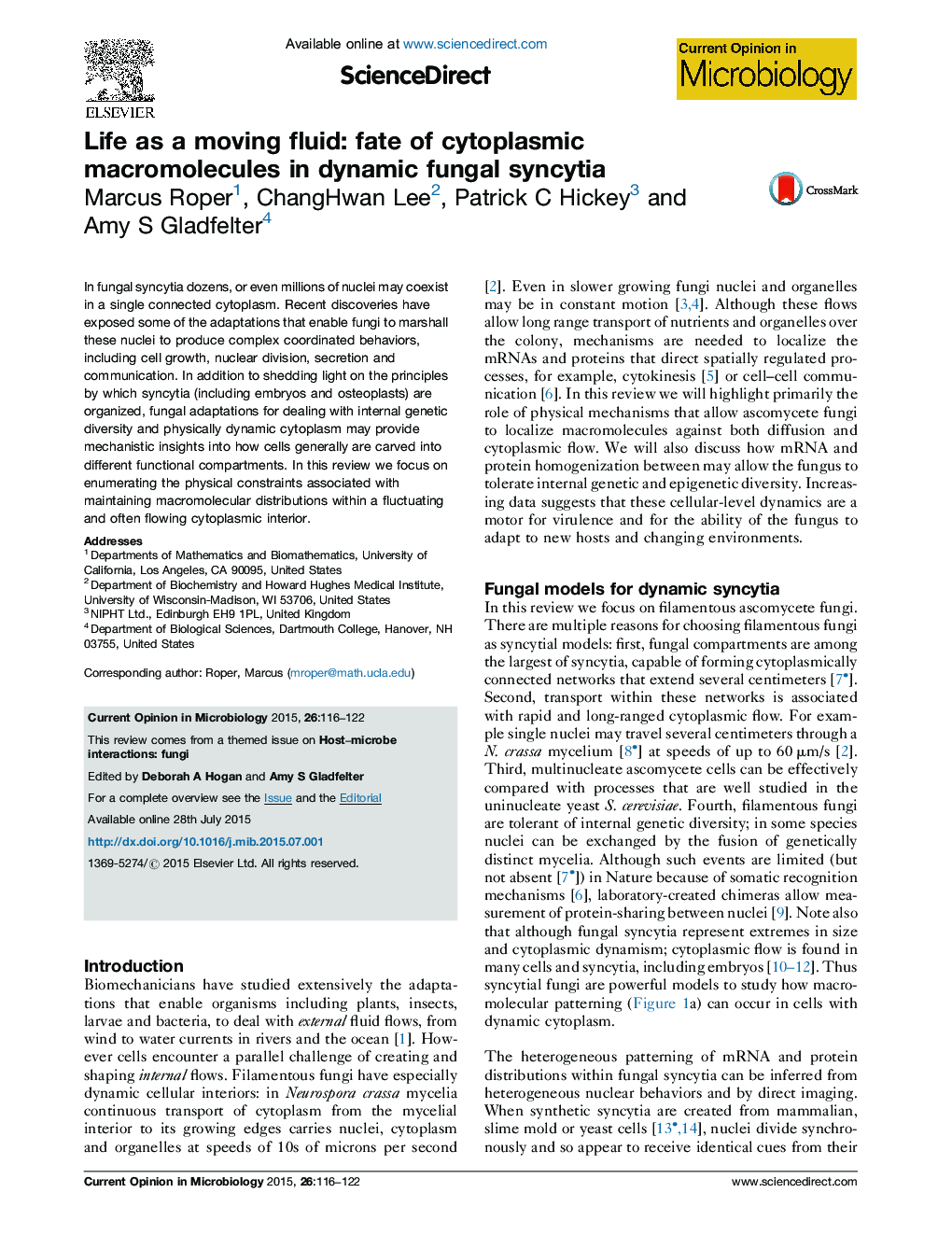| Article ID | Journal | Published Year | Pages | File Type |
|---|---|---|---|---|
| 3399025 | Current Opinion in Microbiology | 2015 | 7 Pages |
•Fungal syncytia are models for the study of functional compartmentalization of cells.•Diffusion, cytoplasmic flow and degradation determine how far each macromolecule disperses.•Localization of macromolecules can be predicted by physical modeling.•Aggregation, corralling, septa and shear set localization distances.•Multinucleate organization is shaped by localization and dispersion of macromolecules.
In fungal syncytia dozens, or even millions of nuclei may coexist in a single connected cytoplasm. Recent discoveries have exposed some of the adaptations that enable fungi to marshall these nuclei to produce complex coordinated behaviors, including cell growth, nuclear division, secretion and communication. In addition to shedding light on the principles by which syncytia (including embryos and osteoplasts) are organized, fungal adaptations for dealing with internal genetic diversity and physically dynamic cytoplasm may provide mechanistic insights into how cells generally are carved into different functional compartments. In this review we focus on enumerating the physical constraints associated with maintaining macromolecular distributions within a fluctuating and often flowing cytoplasmic interior.
